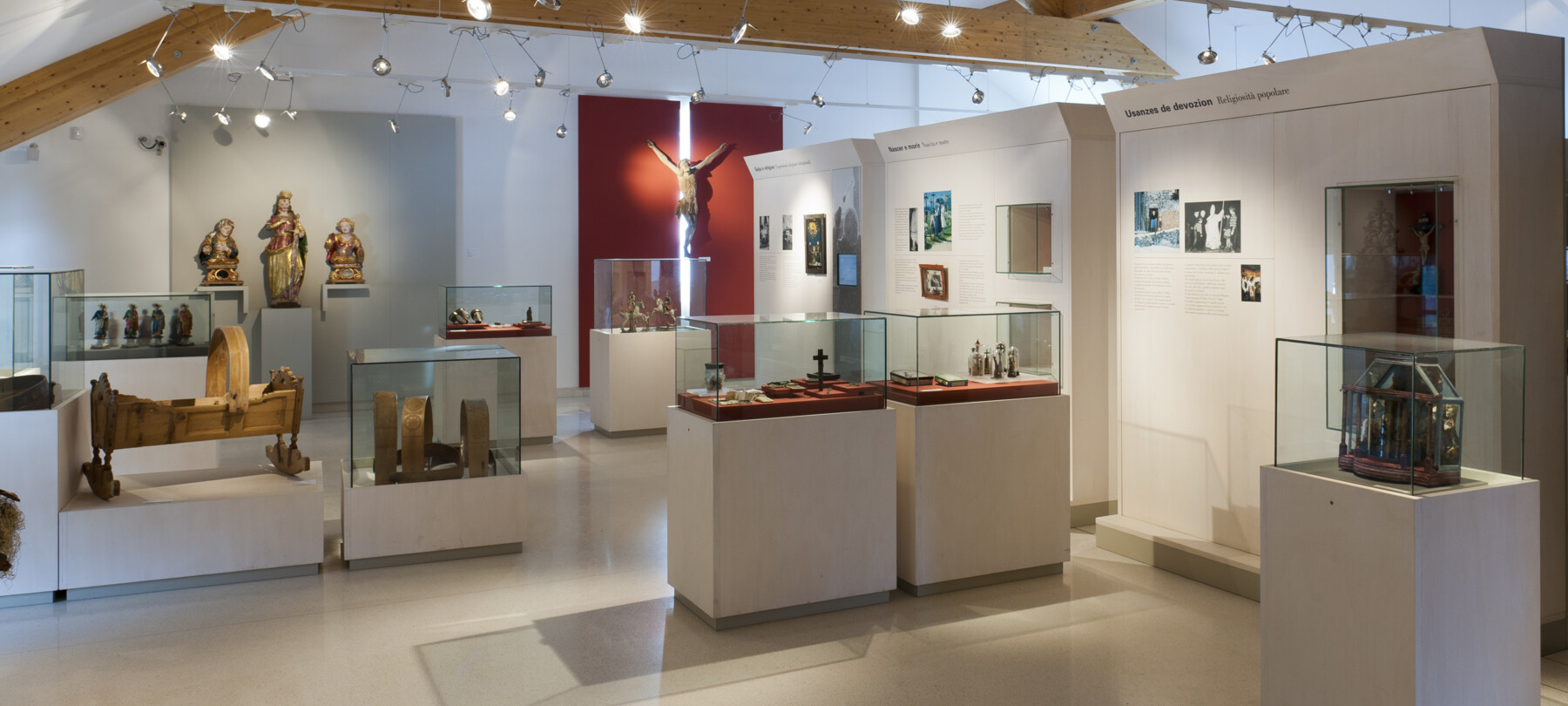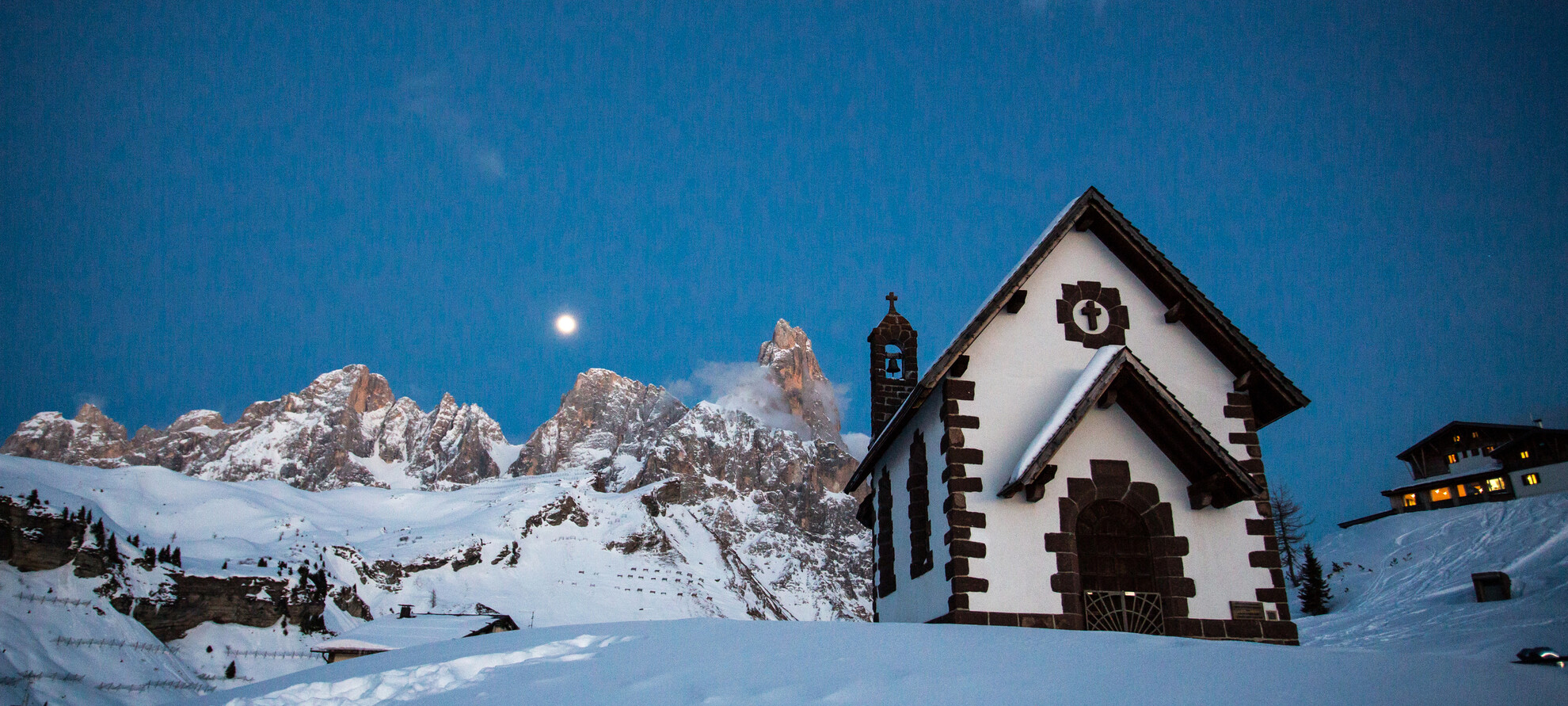Discover the Dolomites, also when it rains
There are many ways to broaden your knowledge of the “Monti Pallidi” (“Pale Mountains”)
Museums, visitor centres, locations of interest: in winter the Dolomites are not only a paradise for skiers. At the bottom of the valley, in the various districts which make up the Unesco Heritage Site, there are various ways of improving your knowledge on the rocks, animals, plants and centuries-old traditions of the “Pale Mountains”.
To make a journey through time, to discover the phenomena that have led to the formation of the Dolomites and the creatures that lived here in the past, it is compulsory to start off from the Museo Geologico delle Dolomiti di Predazzo (Predazzo Geological Museum of the Dolomites), that displays 11,000 rock samples and the richest Italian collection of invertebrate fossils of the Triassic Period.
In the nearby Val di Fassa, the Museo Mineralogico Monzoni (Monzoni Mineral Museum), with over 200 varieties of minerals on display and constituting the most comprehensive private collection of Dolomite rocks, is well worth a visit. Incredible evidence of the Earth’s past can be found on the other side of the Trentino, in the Casa del Parco Geopark di Carisolo (Visitor Centre of the Carisolo Geopark): an interactive space where you can “play” with geology, investigating the geodiversity of the Adamello-Presanella and Brenta areas.

"Museums, visitor centers, points of interest: in winter, the Dolomites are not only a paradise for skiers"
To learn more about the nature and biodiversity of the Dolomites, the best places are the visitor centres of protected areas: Villa Welsperg, near San Martino di Castrozza, offers visitors an “imaginary journey” in the environments and different geographical territories of the Parco Naturale Paneveggio Pale di San Martino (Paneveggio Pale di San Martino Nature Park), to discover the many animals that populate them.
Instead, the Casa del Parco Orso (Bear Visitor Centre), at Spormaggiore, allows you to immerse yourself in the life of the brown bear, the symbol of the Parco Naturale Adamello Brenta (Adamello Brenta Nature Park), through a fascinating journey among woods and legends. At the neighbouring Parco Faunistico (Wildlife Park), you can see live animals of the Alps, at least those that are not hibernating.

"There are a great number of things to do also for enthusiasts of the recent past"
There are a great number of things to do also for enthusiasts of the recent past. There are many museums dedicated to the Great War, for instance the “Gran Vera - La Grande Guerra: Galizia, Dolomiti”, in Moena, and the Museo della Guerra Bianca Adamellina - Recuperanti (Museum of the White War and the Recyclers of the Adamello) - in Val Rendena, at Spiazzo Rendena. Equally thought-provoking exhibitions focusing on the history and ancient local traditions can be found at the Museo della Malga (Museum of Mountain Dairies) in Caderzone, the Museo Ladin di Fassa (Ladin Museum of the Fassa Valley) in Vigo di Fassa and the Palazzo della Magnifica Comunità di Fiemme (Historial Building of the Self-Governing Body of the Fiemme Communities) in Cavalese.
And if, at the end of the day, the weather has improved, why not take advantage of the darkness of winter days to visit to the Osservatorio Astronomico Val di Fiemme (Val di Fiemme Astronomical Observatory), at Tesero, where you can look at the sky from a privileged point of view?
In winter, some museums or buildings may be open only upon prior reservation, therefore, it is best to contact them before starting off.


